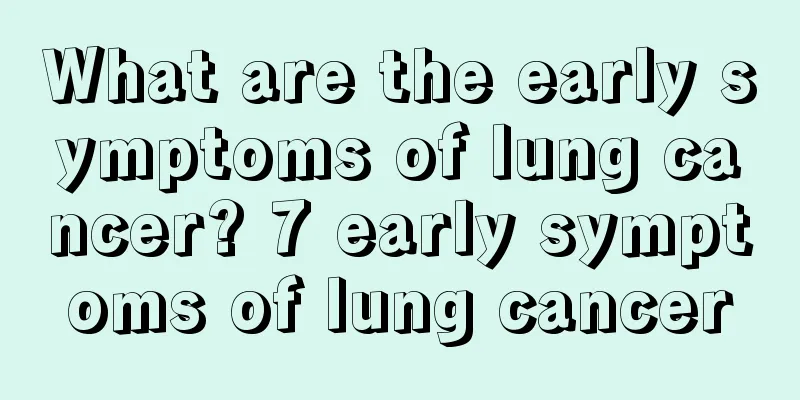The best treatment for endometrial cancer

|
In daily life, women should pay attention to their own hygiene. Many women do not pay attention to sexual hygiene and health care, which can easily lead to diseases. Endometrial cancer is a kind of worry for everyone. In daily life, we should pay attention to the occurrence of this disease to avoid causing more harm. So, what are the common treatments for endometrial cancer? What methods are effective in treating endometrial cancer? 1. Progestin therapy Progestin therapy can be considered for patients with advanced or recurrent cancer, those who cannot undergo surgical resection or those who are young, early-stage, and those who want to preserve fertility. Various synthetic progestin preparations such as medroxyprogesterone and progesterone caproate can be used. The dosage should be large, medroxyprogesterone 200-400mg/d; progesterone caproate 500mg, twice a week, and it should be used for at least 10-12 weeks to evaluate whether it is effective. Its mechanism of action may be to act directly on cancer cells, delay the replication of DNA and RNA, and thus inhibit the growth of cancer cells. Progesterone has a better therapeutic effect on endometrial cancer with good differentiation, slow growth, and high estrogen and progesterone receptor content. Side effects are relatively mild, and can cause water and sodium retention, edema, drug-induced hepatitis, etc., which gradually improve after stopping the drug. 2. Anti-estrogen treatment Tamoxifen is a non-steroidal anti-estrogen drug with a weak estrogenic effect. It can also be used to treat endometrial cancer. Its indications are the same as those for progesterone therapy. The general dose is 10-20 mg, taken orally twice a day, for long-term or divided courses. Tamoxifen has the effect of increasing the level of progesterone receptors. Patients with low receptor levels can first take tamoxifen to increase the level of progesterone receptors, and then use progesterone therapy or use both at the same time to improve the efficacy. Side effects include hot flashes, chills, irritability and other symptoms similar to perimenopausal syndrome; bone marrow suppression is manifested by decreased white blood cell and platelet counts; other side effects may include dizziness, nausea, vomiting, irregular vaginal bleeding, amenorrhea, etc. 3. Chemotherapy Chemotherapy can be considered for patients who are in the late stage and cannot undergo surgery or who relapse after treatment. Commonly used chemotherapy drugs include doxorubicin, fluorouracil (5-FU), cyclophosphamide (CTX), mitomycin (MMC), etc.; they can be used alone, in combination with several drugs, or combined with progesterone. Which diseases have similar symptoms to endometrial cancer? 1. Cervical cancer Like endometrial cancer, it also presents with irregular vaginal bleeding and increased discharge. If the pathological examination shows squamous cell carcinoma, it is considered to originate from the cervix. If it is adenocarcinoma, it will be difficult to identify its origin. If mucous glands can be found, it is more likely to originate from the endocervical canal. Okudaira et al. in Japan pointed out that in invasive cervical adenocarcinoma tissue, the positive expression rate of carcinoembryonic antigen is very high. Therefore, CEA immunohistostaining is helpful in distinguishing cervical adenocarcinoma from endometrium. 2. Primary Fallopian Tube Cancer Vaginal discharge, vaginal bleeding and lower abdominal pain, vaginal smear may find cancer cells and are similar to endometrial cancer. However, endometrial biopsy of fallopian tube cancer is negative, and a mass can be felt around the uterus, which is different from endometrial cancer. If the mass is small and not palpable, it can be confirmed by laparoscopy. 3. Senile endometritis combined with intrauterine pyometra It is often manifested as vaginal discharge of pus, blood or purulent blood, and the uterus is often enlarged and softened. After B examination and expansion of uterine cancer tissue, only inflammatory infiltrated tissue is seen. Pyometra often coexists with cervical canal cancer or endometrial cancer, and care must be taken when distinguishing. In daily life, we should pay attention to some treatment matters of this disease. We need to pay attention to the development of this disease and pay attention to the conditioning methods. We cannot ignore the impact of this disease. We also need to pay attention to reasonable diagnosis in daily life to avoid causing the disease to become more serious. At the same time, we should also pay attention to life matters and effectively carry out health care to avoid more harmful consequences. |
<<: Can endometrial cancer be treated at the age of 28?
>>: Rational use of drugs for endometrial cancer
Recommend
What are the symptoms of allergic bronchitis
Today's ecological environment is getting wor...
Several common symptoms of bone cancer patients
Bone cancer mainly refers to the fact that the sk...
Itch in the inner thighs of the genitals
The senses in every part of the body are very sen...
How to clean an air humidifier
After using the air humidifier for a period of ti...
How to maintain removable dentures
Installing dentures is the most direct way for ma...
What are the common types of benign ovarian tumors
Ovarian tumors are a common type of gynecological...
A seven-month-old baby tosses and turns when sleeping
A seven-month-old baby's body is just beginni...
Can early lung cancer be prevented?
Early lung cancer can be prevented to a certain e...
The reason why you can't drink water after exercise
However, many of us still don’t know the reason w...
Early signs of liver cancer in women
In the early stages of liver cancer in women, the...
The correct way to wipe glasses
Nowadays, more and more people wear glasses, and ...
Does spider nevus necessarily mean liver disease?
The liver is one of the most important organs in ...
The effect of taking Fengyoujing orally
Fengyoujing can generally have a refreshing effec...
Does a sanitary napkin have more bacteria or dirty underwear have more bacteria?
Compared with men, women's reproductive struc...
How to treat pelvic metastasis of colon cancer
The main treatment methods for pelvic metastasis ...









